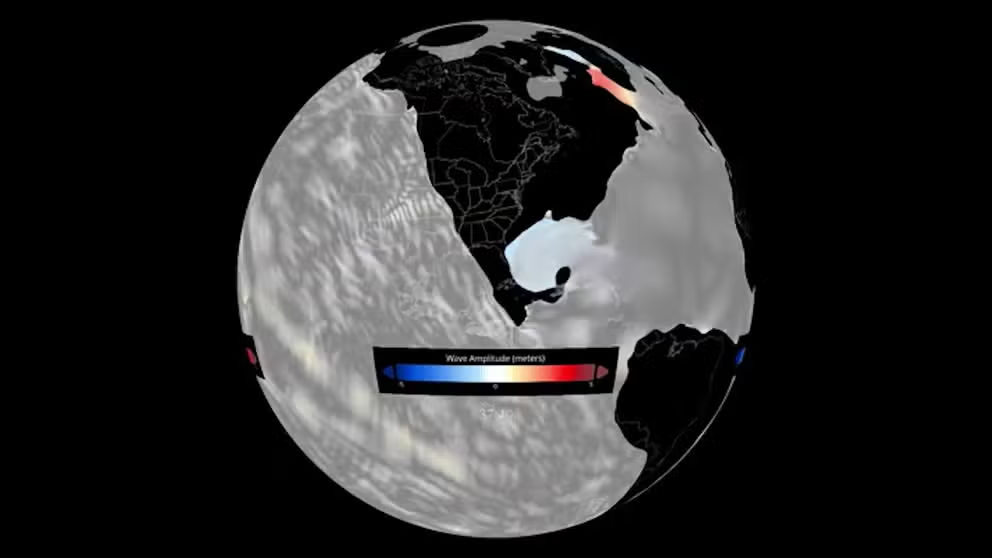Watch: Simulation shows tsunami from dinosaur-killing asteroid that brought 2.5-mile-high waves to Gulf Coast
The impact from the asteroid 66 million years ago left a crater 110 miles wide and 12 miles deep and generated a massive tsunami that defies reality.
Dinosaur-killing asteroid triggered a tsunami with mile-high waves
An asteroid that struck Earth 66 million years triggered a megatsunami that wiped many of the dinosaurs
Some 66 million years ago, a 6-mile-wide asteroid crashed into Earth near what today is Mexico's Yucatan Peninsula, wiping out much of the planet's life.
The impact left a crater 110 miles wide and 12 miles deep and generated a massive catastrophic tsunami that defies reality.
Scientists estimate the waves reached an unfathomable 2.5 miles high as they crashed into the land masses of the day -- particularly what would have roughly been considered the Gulf Coast. The catastrophe is considered 30,000 times larger than any other recorded event.
DINOSAUR-KILLING ASTEROID TRIGGERED A TSUNAMI WITH MILE-HIGH WAVES
NOAA scientists have now created a simulation of the tsunami as it reverberated around the planet, superimposed on both what the planet looked like 66 million years ago (the black land masses) and a white outline of what Earth looks like today -- remember continents drift at about an inch a year.
NOAA simulates tsunami from dinosaur-killing asteroid
A 6-mile-wide asteroid struck the Earth some 66 million years ago and generated a tsunami that created waves 2.5 miles high as it crashed ashore. NOAA has now created a simulation of the event. (NOAA Video)
EVERYTHING SCIENTISTS WOULD WANT TO KNOW IF AN ASTEROID WERE HEADING TOWARD EARTH
The worst of the waves were concentrated near the impact zone around the prehistoric Gulf of Mexico and the Mexican peninsula, but massive waves would have reached just about all ocean shorelines.
The asteroid is widely accepted to have wiped out nearly all non-flying dinosaurs and 75% of other plant and animal species on Earth, NOAA said.
Preventing history from repeating itself
Such large asteroid strikes happen millions of years apart, on average. But to prevent the human race from meeting a similar fate someday, NASA is researching ways to deflect or destroy any large asteroid that threatens Earth.
SMASHING SUCCESS: NASA'S FIRST PLANETARY DEFENSE TEST CHANGES ASTEROID'S ORBIT BY 32 MINUTES
Just last year, NASA's Double Asteroid Redirect Test (DART) spacecraft successfully changed the orbit of an asteroid by slamming an appliance-sized spacecraft into it.
The new tsunami simulation was created as part of NOAA's Science on a Sphere project, which uses computers and video projectors to display planetary data onto a 6-foot diameter sphere, similar to a giant animated globe. The SOS is featured in 177 exhibits at science centers and museums across the U.S. and the globe.

